Festive Celebrations
One of the highlights of living in Singapore is experiencing the festivals of its various ethnic and religious communities throughout the year.
In the early days, the different migrant communities, predominantly from China and India, brought their cultural and religious practices to Singapore. Observance of traditional festivals provided the immigrants a sense of identity and solace as they navigated life in a strange land. The Malay community observes Islamic festivals, the dates of which are in accordance with the Islamic lunar calendar.
Over time, these festivals became annual highlights, eagerly anticipated and celebrated. Festivals like Lunar New Year, Hari Raya Aidilfitri, Deepavali, and Christmas, continue to be important occasions for celebration with family and friends today.

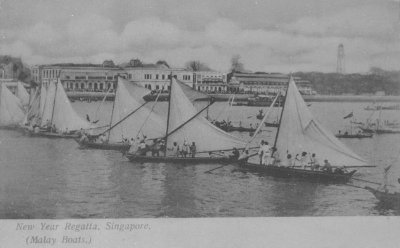
View of Malay boats at the New Year Regatta, 1905
The New Year Regatta was started by Europeans in 1834 as a boat race at the sea off Collyer Quay to celebrate the new year. It later became part of a full-scale sports day open to all races. At the regatta, one could see a wide variety of sailing vessels including the kolek lumba, the Malay boat seen here, as well as sampan, prahu, canoe, dinghy and yacht. Large crowds would gather along the waterfront to watch the race.
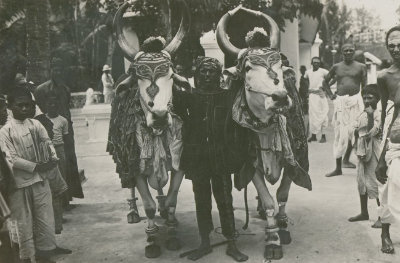
Mattu Pongal, 1915
The Tamil community celebrates Pongal, a four-day-long harvest festival to give thanks to the deities who rule the rain and the sun, as well as to cattle that play a crucial role in farming. The third day, known as Mattu Pongal, is the day cows – a sacred animal in Hinduism – are honoured for their hard work. They would be decorated with paint, flowers and bells, as seen in the image. They would also be fed with sweet rice, sugar cane and be allowed to roam free.
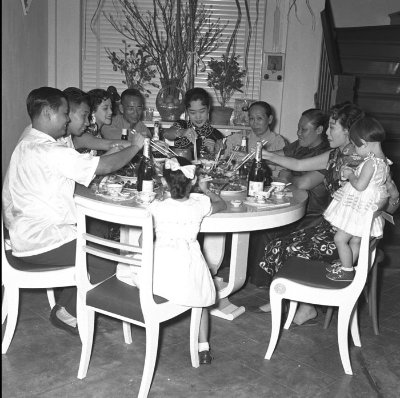
Reunion dinner on the eve of Chinese New Year, 1955
The Chinese partake in the reunion dinner on the eve of the new year in the lunar calendar, which is an important occasion for the family members to affirm love and respect for one another and strengthen ties. At the dinner, food is served in abundance, symbolising prosperity in the year ahead.
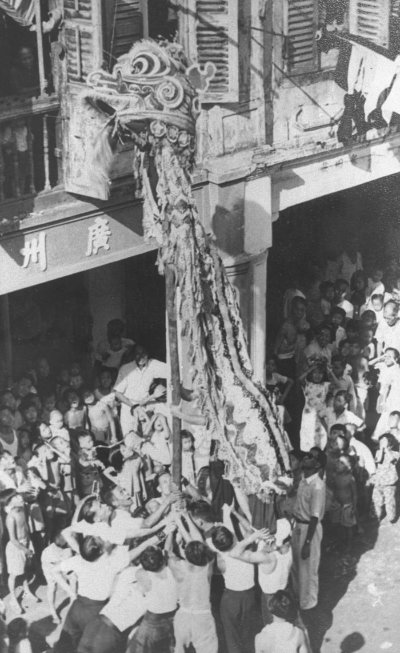
Lion dance on Smith Street, Chinatown, 1951
The lion dance is performed in Singapore during auspicious occasions and festivals such as the Chinese New Year. The performance combines skilful movements and acrobatics, and is accompanied by cymbals, gongs and drums. Seen here, the “lion” climbs onto a wooden pole to reach the second floor of a shophouse to collect a reward – a red packet. Believed to bring good fortune and wealth, the lion dance performance is still common at the launch of businesses, or when they reopen in the new year.

Chingay Procession, 1900s
Chingay (妆艺) originated from an ancient Chinese practice where performers and dancers took to the streets to celebrate the lunar new year and to honour deities. The procession was usually accompanied by men carrying floats and replicas of animals, such as dragons. In Singapore, it evolved into an annual street parade. The procession often featured decorated platforms – either mounted on carts or carried by men – adorned with paper dolls, animals and lanterns, depicting religious or historical scenes. The Chingay Parade today is an extravaganza with float processions and live performances usually held on the second weekend of the Chinese New Year, attracting thousands of spectators.
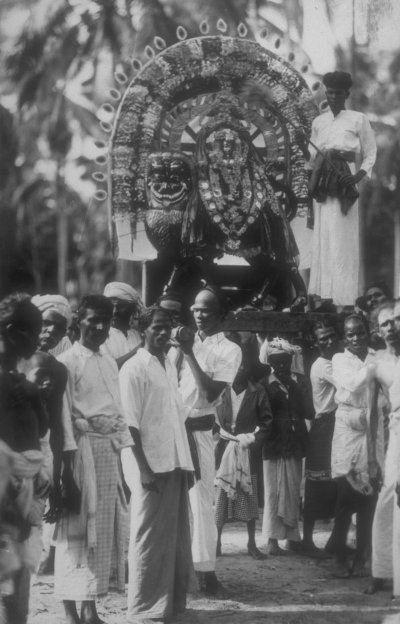
Thaipusam Celebration, 1930s
Thaipusam is a Hindu festival celebrated by the Tamil community. It is a day of prayers and penance dedicated to Lord Muruga, a much revered deity among the South Indians. The festival is characterised by spectacular proceedings such as the Silver Chariot procession and devotees carrying the kavadi, a semi-circular structure decorated with peacock feathers, palm leaves and flowers.
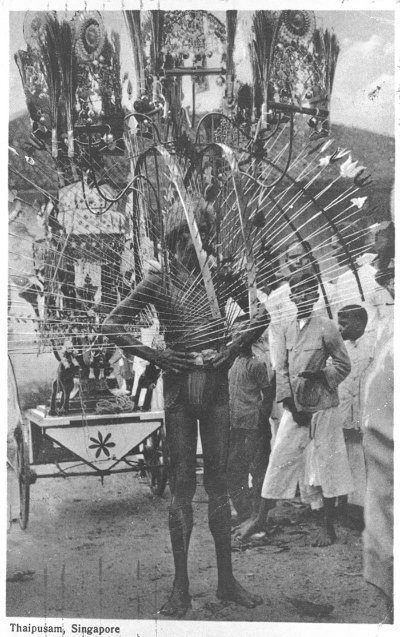
Kavadi-bearer at Thaipusam festival, 1934
During Thaipusam, devotees would carry kavadis in a procession that starts at Sri Srinivasa Perumal Temple on Serangoon Road and ends at Sri Thendayuthapani Temple on Tank Road. Often, the kavadi-bearers would carry sharp skewers pierced through their tongues, cheeks and bodies, signifying their wish for forgiveness, to keep a vow, or to offer thanksgiving to Lord Muruga.
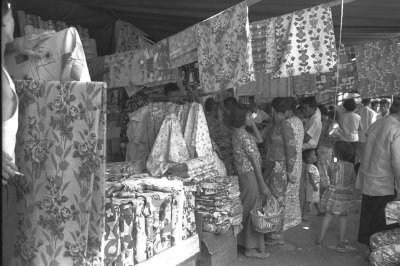
Hari Raya Aidilfitri festive shopping, 1965
Hari Raya Aidilfitri, also known as Hari Raya Puasa, is a major Muslim festival that marks the end of the fasting month or Ramadan. To prepare for the celebration, families often go shopping for fabrics to make new clothes or buy ready-made garments. The Malays will be dressed in their traditional finery – baju kurung for females and baju Melayu for males – when visiting relatives and friends during the celebrations, which usually lasts for a month.
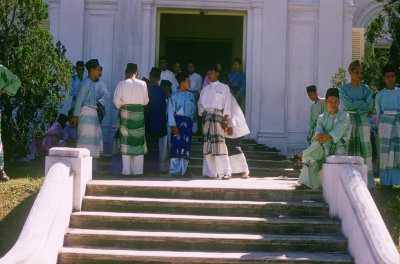
Worshippers at a mosque during Hari Raya, 1950
On the morning of Hari Raya Puasa, it is customary for Muslim men to visit the mosque and perform special congregational prayers. Traditionally, Muslims also visit the graves of loved ones, before visiting family and friends for the festivities.
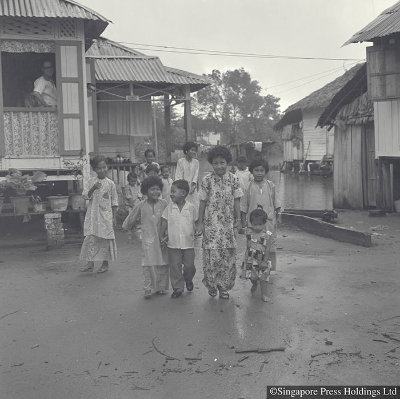
Malays celebrating Hari Raya Puasa, 1963
During Hari Raya, Malay families typically visit relatives and friends. They usually start with visiting their parents, followed by other elders, relatives and friends. During these visits, people partake in communal feasts. It is also customary to ask for forgiveness and seek reconciliation from one another.
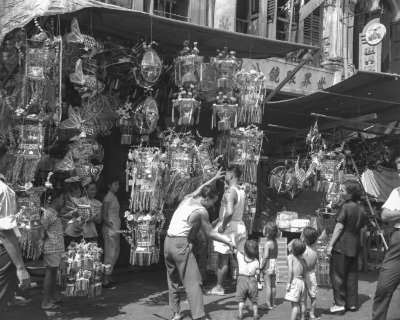
Stall selling lanterns for the Mid-Autumn Festival, 1954
The Chinese community celebrates the Mid-Autumn Festival, which started as a harvest celebration and is believed to be associated with moon worship. The festival is a time for family reunions and social gatherings. For children, the highlight is none other than carrying lanterns traditionally made from wire and colourful cellophane. The beautiful lantern displays in Chinatown are a major attraction of the Mid-Autumn Festival in Singapore.
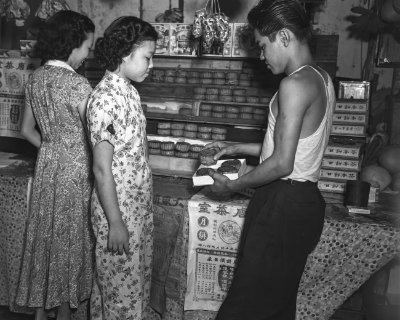
Buying mooncakes for Mid-Autumn Festival, 1951
Eating mooncakes is an essential part of the Mid-Autumn Festival. The round pastry resembles the moon and symbolises completeness and harmony in the family. Traditionally people would gather for “moon appreciation” parties and partake in mooncakes, pomelos and tea, as it is believed the moon is at its brightest on the day.
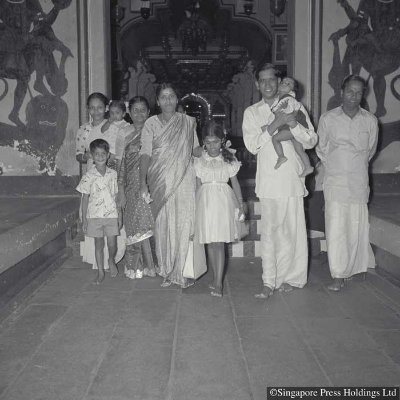
Hindu family at a temple for prayers during Deepavali, 1956
Deepavali or Diwali, also known as the festival of lights, is celebrated by Hindus worldwide. While the origins of Deepavali vary among Indian communities, the festival ultimately celebrates the triumph of light over darkness, or good over evil. On the morning of Deepavali, Hindus offer thanksgiving prayers and perform rituals in their respective family shrines before visiting temples to offer their prayers.
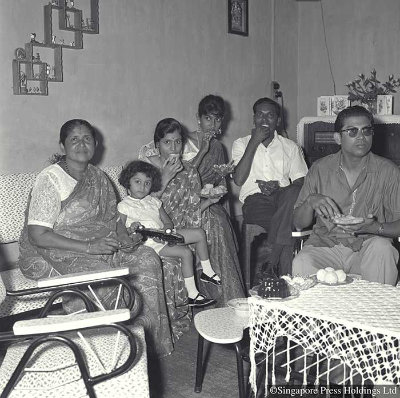
Hindu family celebrating Deepavali at home, 1963
Prior to Deepavali, Hindu families clean and decorate their homes, where celebrations usually take place. Small clay oil lamps or diyas are placed at doorways to draw auspicious energy into the household. Visits to relatives and friends take place after the temple prayers. Families usually treat their visitors to sweets and savoury snacks.

Nativity play, 1930s
Christmas is a time for Christians to celebrate the birth of Jesus Christ. As part of the occasion, churches or religious groups often re-enact the nativity scene – the account of Jesus’s birth based on the Bible – as seen in this photograph.
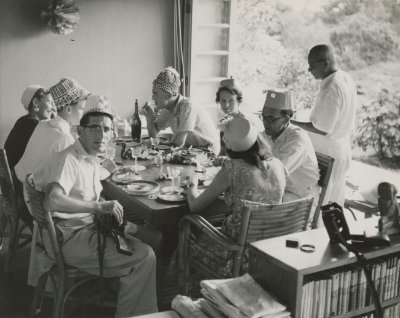
Christmas meal of expatriates, 1953
Apart from its religious significance to Christians, Christmas is also a time to deepen family bonds and renew friendships through gathering and feasting. To the expatriate community in Singapore, Christmas meals and parties would have been an essential part of the festivities.
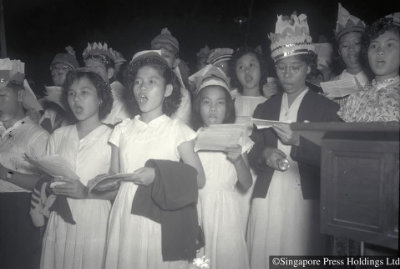
Christmas carollers singing at church, 1951
Carolling is another tradition common in Singapore during Christmastime. During this period, carollers sing Christmas hymns and songs in churches and people’s homes to spread festive cheer. Today, carolling groups often perform in shopping malls and other public spaces in the lead up to Christmas.

